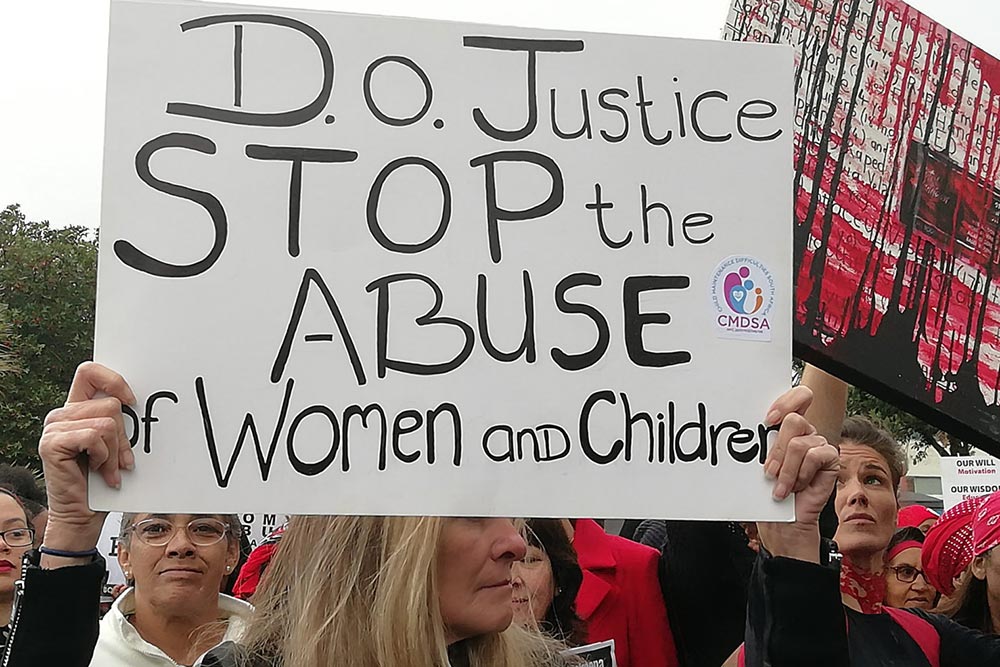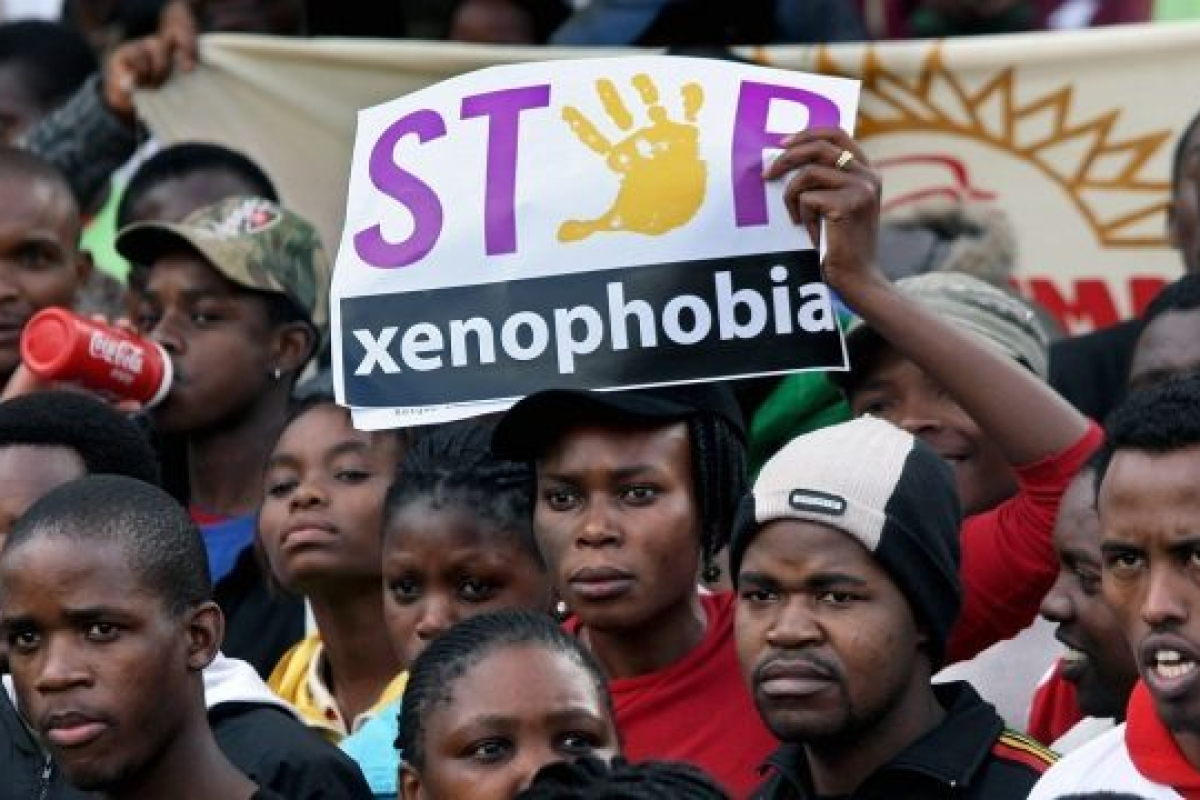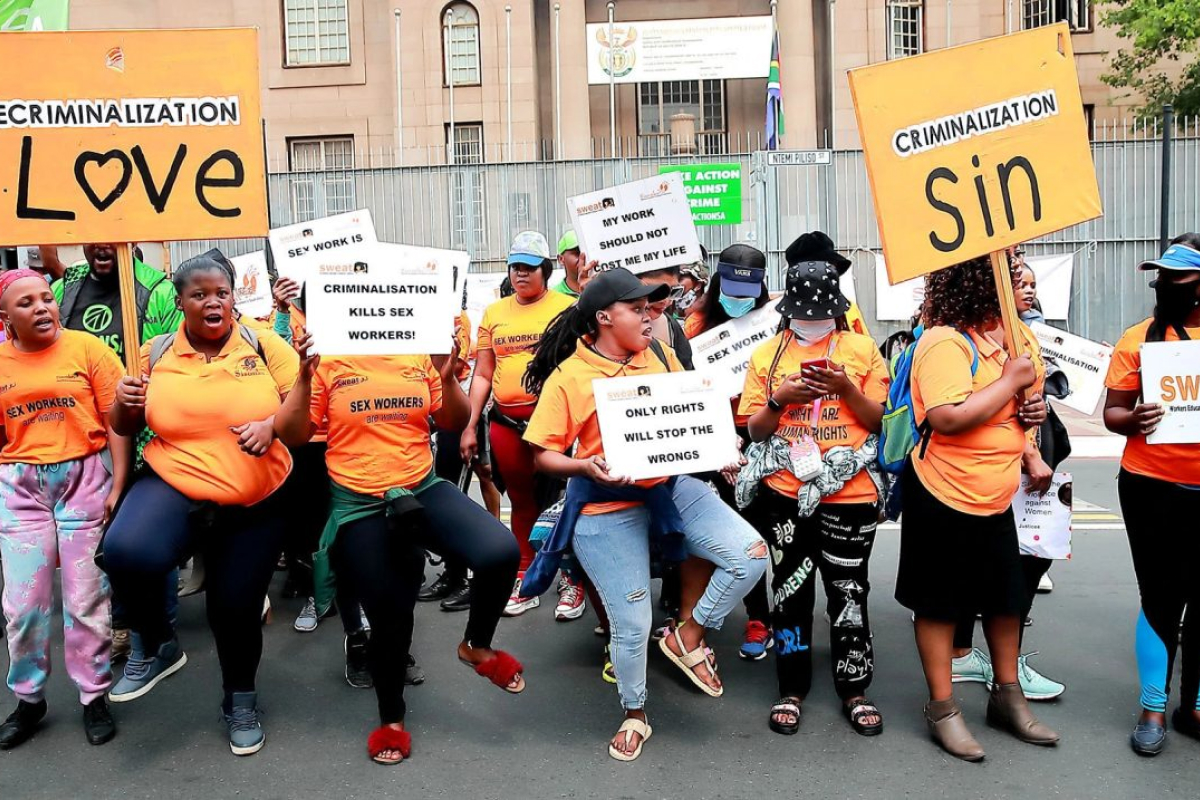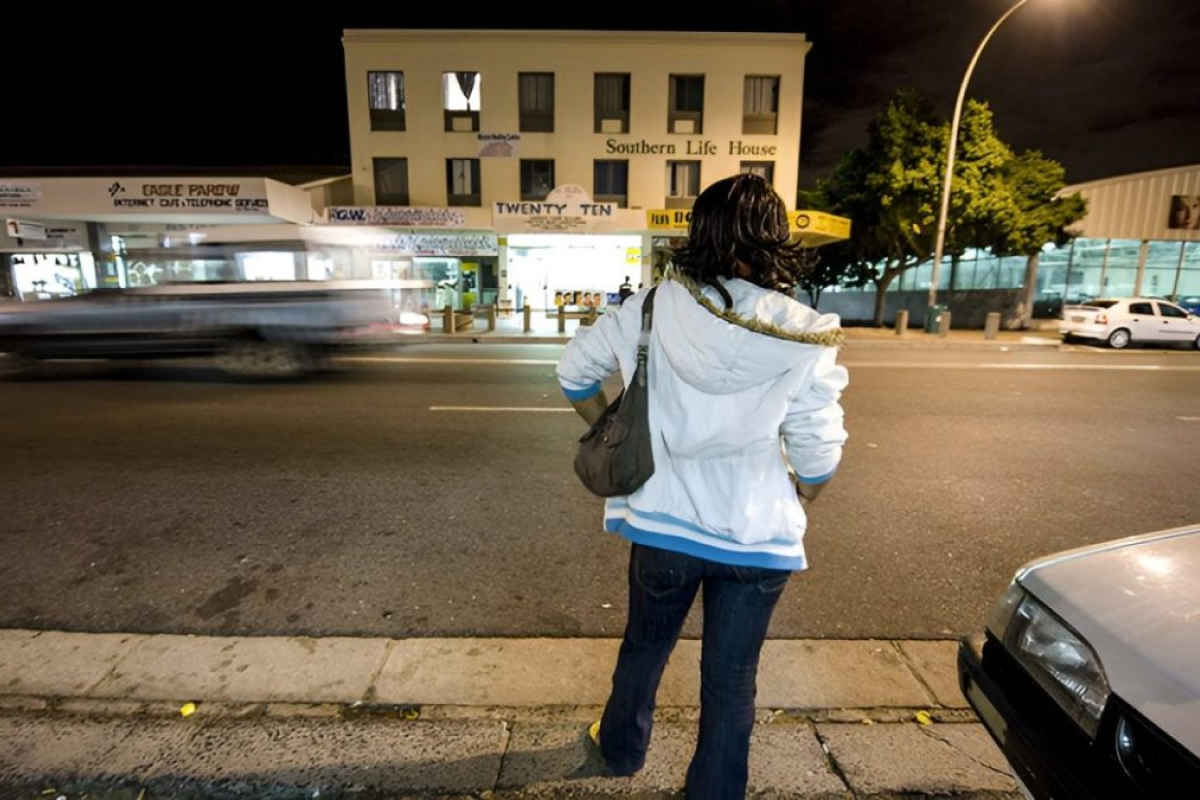It’s the afternoon of Thursday 1 November. President Ramaphosa approaches the podium to begin his address. As he starts to speak, a group of women, some of them survivors of gender-based violence (GBV), stand in silence, holding up pairs of panties covered in messages, which silently scream of the abuse and trauma of sexual violence. The image jars – as it’s meant to, signifying the site of violation.
The silent protest was a powerful symbol of how survivors of gender-based violence have suffered and must carry their physical and emotional scars every day.
This was day one of the two-day Presidential Summit against Gender-Based Violence and Femicide. Over 1,200 delegates from government, civil society and trade unions gathered in Pretoria for two days of panel discussions and raw first-hand survivor accounts of sexual violence, some illustrating how the justice system has failed them.
On the second day, a Declaration was issued from President Ramaphosa with fresh commitments to address and eradicate gender-based violence and the toxic patriarchal structures within our society, which feed the flames of sexual violence. The success of the Declaration is owed in part to the tireless and passionate work of activists and activism from the #TheTotalShutdown movement – a collection of civil society, community based organisations, trade unions and individuals.
Concretely, the Declaration commits to the establishment of an overarching, multi-sectorial gender-based violence co-ordinating structure and a national strategic plan on GBV – something which Sonke and civil society partners have been calling for for years. This national strategic plan on GBV is to be laid out in a five year action plan which will be fully-costed, accountable, legislated, and regularly evaluated. Full and adequate services for survivors of violence will be provided (and importantly, full funding provided for Thuthuzela Care Centres, many of which have been under threat of closing). Targeted social behavioural change programmes to challenge patriarchal norms and structural forms of violence are to be implemented, as well as establishing a Code of Conduct for Government, the private sector, religious and traditional leaders. We welcome the commitment to both prevention and response – to both challenging the social norms and structural drivers that lead to violence and to ensuring survivor’s needs are met.
Now that the talking’s done, it’s time for action.
And civil society has already begun. A civil society collective has begun drafting a term of reference for the interim gender-based violence co-ordinating structure. This structure will inform the national strategic plan on GBV as well as harmonise the work on gender-based violence across ministries and sectors and inform the budgets for government response. This synchronisation is essential. Currently government has overlapping plans to address gender-based violence and violence against women and children. For example the Department of Social Development (DSD) has an Integrated Development Plan of Action Against Violence against Women and Children within its own budget. Simultaneously, the Department of Justice has a separate plan to address gender-based violence within its budget. The result is mis- or no communication, lack of clarity around resources and shifting of responsibilities.
This GBV co-ordinating structure must hold 51% representivity of civil society but more importantly, it should reflect the representation and lived experiences of women on the ground and how such policies should cater for their needs. The interim structure is to be developed within six months. It is essential that despite the short time frame, the process remains collaborative, informed and practical. We cannot afford yet another government-led initiative that utilises taxpayers money to produce a bloated and inefficient structure which over promises and under delivers.
It is essential that the outcomes of the Summit and Declaration are shared far and wide to those facing the brunt of gender-based violence, particularly in rural communities, townships and inner city urban areas. And importantly national, provincial and local gender-based violence prevention and services policies developed, must speak to each other.
It is clear to us that local government must be empowered by national and provincial policies if effective results are to be produced. Any plans rolled out at national level must consider the practical implementation at local government level, including each unique set of factors that communities may face. For example in Butterworth in the Mnquma Municipality of the Eastern Cape where Sonke works, there are a high number of cases dealing with gender-based violence. There is a fully equipped sexual offences court but currently no permanent magistrate to attend to these cases. The result is ongoing postponements – and justice can be delayed for years.
It’s essential that GBV interventions be culturally sensitive and socially relevant. This would include a carefully considered, fully costed budget within Integrated Development Plans (IDP). IDPs are five-year plans which local government is required to compile to determine the developments needs of the municipality. Plans should include psychosocial services, context specific by-laws and development of strong code of conducts and policies addressing sexual harassment in the workplace.
Paramount to these plans at both national and local government level is social behavioural change programmes that address prevention of gender-based violence. It is only by tackling the root causes of gender-based violence, including deeply embedded patriarchal notions of masculinity, that we will eradicate violence in this country.
Over the years Sonke has learned a lot about what policies and programmes work to prevent violence against women. Homegrown South African initiatives like Stepping Stones, the Sinovuyo Caring Families Project, The Intervention for Microfinance Project for AIDS and Gender Equality (IMAGE) for women, and Sonke’s One Man Can Campaign, among others, have all been shown to reduce levels of violence. Many other initiatives show significant promise. Providing psycho-social support to children exposed to violence, improving parenting skills, reducing problem drinking, improving food security, installing lighting, removing guns from men with protection orders against them, community-based rights literacy, all of these approaches reduce levels of violence and must be implemented nationally, provincially and locally.
With this multi-pronged strategy in mind, Sonke is currently working alongside local government in the Eastern Cape, Western Cape and Gauteng. On 28 November, during 16 Days of Activism we will be launching the ground-breaking Mnquma Gender-based Violence Forum, a local multi-sectoral, coordinating structure for the prevention and response to gender-based violence at a local level. Aims of this partnership include working together as municipal, political, traditional, religious and community stakeholders to eradicate gender-based violence within Mnquma Municipality and the surrounding areas, as well as to develop a Local Strategic Plan to prevent and respond to gender-based violence in the municipality.
Other countries around the world have succeeded in reducing levels of violence against women. We can achieve that here too. It will require political will, dedicated resources, citizen activism and oversight and evidence based policies and programmes.
Like you, Mr President, we are convinced that by working together and by mobilising all South Africans, we can create a society where all people are safe – at all times and in all places.
The time for action is now, Mr President.








